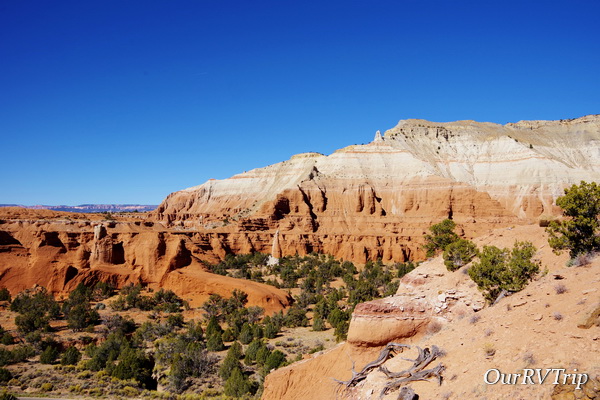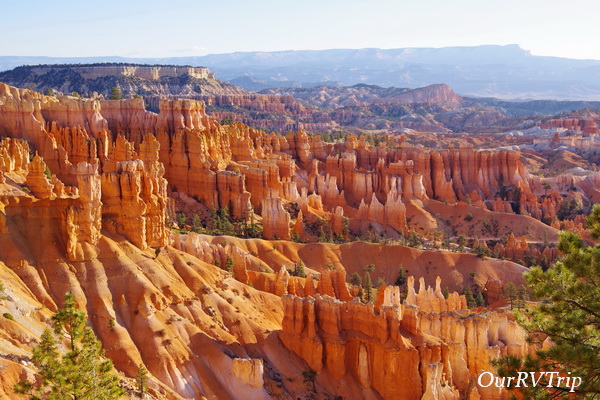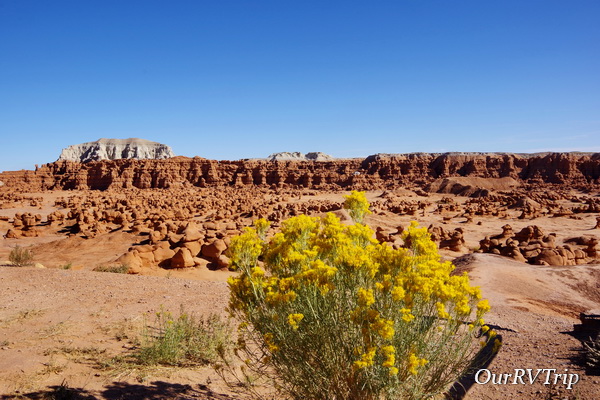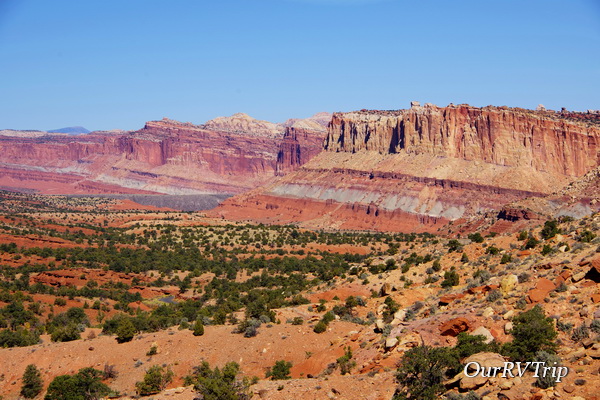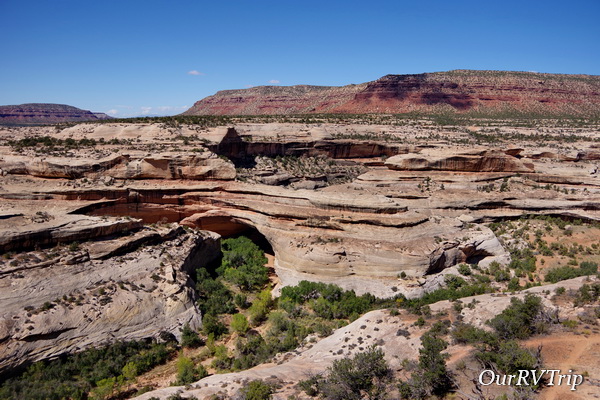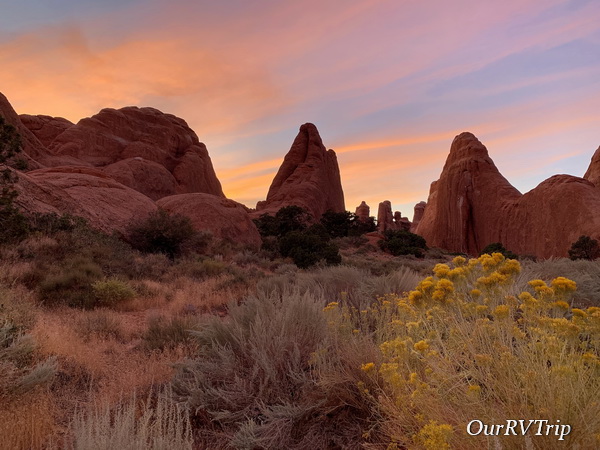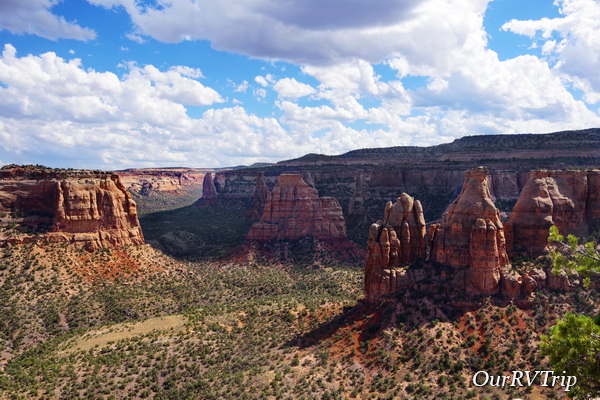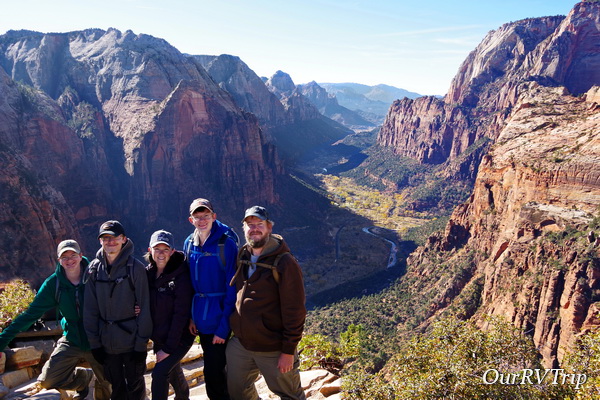
Zion National Park
Hey Guys!! We’ve made it to the last post of the Southern Utah section of our National Park Tour and our focus is on Zion National Park!
This canyon was called Mukuntuweap by the areas first inhabitants and changed to Zion when it became a National Park in 1919. It’s not the biggest National Park in the country, but it’s definitely one of the most popular. Zion National Park has six sections. Yup, you read that right. Six. We didn’t make it to all six sections, but we made it to four and saw the beginning of a different section (the narrows), but didn’t actually explore it.
Let’s start with the Zion-Mt Carmel Tunnel. Oh, the things I’ve heard about this tunnel. When I first decided to do a tour through Utah’s Big Five, I knew we would end with Zion which meant we would either have to go through this tunnel or find a way around it. The tunnel itself is just over a mile long and is 13’2″ tall in the center. So, if you’re in a vehicle over 11’4″…well, you’ll need to drive down the middle of this two way tunnel to make it through. Which, means you have to pay $15 and have an escort. I didn’t want to even think about that tunnel and our home-on-wheels so we went around. We did go back and drive through the tunnel in our 4Runner and decided we’d made the right decision.
The tunnel itself it pretty cool! Construction started on it in 1927 and completed in 1930 with a cost of $503,000…to put that into perspective…that would be around eight million dollars today (2019).
In the tunnel, there are big windows (galleries) that allow some natural light in. I got a picture out one of the windows…it was tricky since you can’t slow down or stop within the tunnel. Originally, the windows were used to get rid of the rock the tunnel was made of. The rock from the tunnel construction was dumped out of the windows into the canyon below.
The first section of Zion that we explored was the Upper East Canyon. We went through the tunnel so we could do the Canyon Overlook Trail. We picked the wrong time of the day to do this trail. Pretty much all of it was in the shadows which made getting a good picture of anything difficult. The hike was really cool though! We hiked up onto the side of a canyon, through a little cave, across a weeping wall, and out to the overlook. If you do this hike, make sure you’re wearing shoes with good grip. There’s a lot of walking on slick rock that is sometimes wet. We saw a few people doing this hike with the wrong shoes and they struggled quite a bit.
The second section we explored was Kolob Canyons. This section is about a thirty minute drive from the main canyon and has it’s own visitor center and ranger station. Because this section is so far away from the more popular Main Canyon, it sees fewer visitors. If you’re wanting to get away from the massive crowds…this is the place to go. You’re still going to see some people, but not nearly as many.
The day we went to Kolob Canyons it was super smoky as smoke from a controlled burn being held north of the park blew in. We wanted to make it back on a different day to see the canyon smoke free, but it just didn’t happen. Because of the smoke, we didn’t do much hiking. We did one small hike up to the Kolob Canyons Viewpoint. You can see from the pictures that it was really smoky so we didn’t dawdle too much here.
Kolob Terrace was the third section of the park we explored. We hit this section the same day we hit Kolob Canyon and you can see the smoke was still hanging around. This section of Zion is known mostly for the “Subway” hike. We didn’t do this hike…I’m not a fan of cold and the thought of traipsing through 32° water for hours on end…well…I’m going to pass on that every time.
You can also find the highest point in Zion in this section. Lava Point. You can see the view from there in the pic above. You can also see a huge lava flow from there (not pictured). We meandered our way around Kolob Terrace and then drove up to Kolob Reservoir to have lunch. It was nice and quiet with just a few other people milling around.
The last section of Zion National Park we explored was the Maine Canyon. This section of the park is the most visited section where you’ll find hikes like Angles Landing, The Narrows, and the Emerald Pools. Our first expedition into this section was to work on the Junior Ranger Book and to familiarize ourselves with the park and shuttle stops. We got there late in the afternoon and the park was starting to clear out for the day. The Junior Ranger book had us stopping at each of the shuttle stops looking for specific things.
Did you know that there’s an arch in Zion? Actually, there are several. Crawford Arch is the easiest to see even if it is barely visible, but you can see it if you know where to look on Bridge Mountain.
It took us a few minutes to spot it, but we eventually found it! For a long time, people thought it was a natural bridge…which is why the mountain is called Bridge Mountain.
When we first found out we would have to ride the shuttle anytime we wanted to explore the main canyon, we weren’t thrilled. Our first two experiences with mandatory shuttles weren’t the best. Tons of people…all of them pushing to get on and off the shuttles…most of them in a bad mood…we avoid those types of crowds as much as possible. In order to try and cut down on the crowds, we went in and out of the park during odd times. Very early or later in the after noon seemed to be the best times for avoiding the biggest crowds.
One of the hikes we did in Zion was the Riverside Walk Trail. This is the trail to get to The Narrows. It takes you along the Virgin River for a mile or so then the trail ends and The Narrows begins. This is a great hike for those of us who are curious about The Narrows, but don’t want to hike in freezing water. You can rent gear that’s supposed to help with the cold, but I talked to a few people as they were finishing this trail…and you still get wet…and it’s still cold. When we were there the water was right at freezing. We decided to save all of the water trails for when the water and the air (it was a balmy 40° while we were there) are both warmer.
The Riverside Walk was a great walk in the park. Really, that’s what it was. The trail is paved and takes you beside the river the whole way. One of the coolest things you’ll get to see on this trail is a weeping wall. Zion is all about the weeping walls. I don’t have a good picture of a weeping wall…it’s hard to capture the right angle/shot of it to really convey what and how big it is. I’m not an expert photographer…I just point and shoot with a semi-fancy camera. So, what the heck is a weeping wall? Well, a weeping wall is when the water that is seeping down from the top of a sandstone (or really any) rock can’t get through the stone going down anymore so it goes sideways…and forms a weeping wall…or sometimes it’ll form a spring. Usually on weeping walls you’ll find hanging gardens that are just…magical. Seriously…it’s amazing stuff.
One of the neater things you can do at Zion right now (or at least when we went) is see a juvenile California Condor. Chick #1000 and its parents were sticking around shuttle stop number eight. We stopped by a couple of times and were rewarded with a few views. The Ranger that was posted there told us that if one of the adult California Condors were to fly down and land next to us, they would stand at 4′ tall. Guys…I’m 5′. Those area some seriously big birds! In the right picture you can see one of the parents sitting near the top of the tree.
In the right picture you can see the adult condor a little better. I tried to take a picture through the scope the Ranger had set up. In the left picture, you can see the juvenile chick #1000 sunning it’s wings. It was fun to see these big birds. While we were there one day, one of the other visitors was telling us how he had been on the team who caught the original California Condor transplants. He got a little emotional talking to us about it all. It was a treat to see it all through his experiences with the birds.
For those of you who know me…you know that I’m not a morning person. Not even a little. And if you’re wondering…this (the picture above) is what the butt-crack-of-dawn looks like. We got up way too early on our last day in Zion to do the Angels Landing Trail. We wanted to be on the first shuttle out that day so we could beat some of the crowd.
We made the very first shuttle out that day. It wasn’t packed, but it was pretty full. Most of us were going to one of two hikes…Angles Landing or The Narrows. You could tell which hike a person was going on based on whether they were wearing water proof gear or not.
I’m a slow hiker. I’m slow going up due to lack of being able to breath (I’m out of shape…and love my foodies) and I’m slow going down (I have a thing about slipping on a trail). And…I’m always stopping to take pictures…of everything. So I knew it would take me longer to get up this trial. Some of these switchback are close to a 15% grade…which doesn’t sound like a lot, but when you’ve been walking at a constant up for close to two hours…15% feels more like 75%.
We got through one set of switchbacks and thought we were almost there when we found the second set of switchbacks. I think this second set is called Walter’s Wiggles. They were even steeper than the first set. Everyone on our shuttle had passed us by this point and the people on the next shuttle were starting catch up and pass us…but really, the trail was pretty empty. It was still super early. The lighting was starting to get to that amazing golden hour lighting that makes everything pretty.
So…I had mixed feelings about taking the boys on this hike. Angels Landing is a dangerous hike once you reach the chains section of the trail. Until then…it’s just switchbacks and anyone can do it. But the chains section…it’s serious. People fall of this section every single year. We had several talks with our boys about this section and we were confident that they wouldn’t mess around or get distracted. One mess up…one wrong step…it wouldn’t be good. I honestly think this hike should go to a permit based system that has an age requirement of 14. As Zion gets more and more popular the crowds on Angles Landing get worse and worse.
We decided that at any time one of us felt like we couldn’t go on with this hike that we would all stop and turn around. Zion has bolted chains into the rock pretty much the whole way up to the summit of Angles Landing, but when the trail is crowded and you have to go around other people on the trail…then there are times when you might have to let go of the chain. That’s another reason we started so early. I didn’t want to deal with crowds on the chain section. In fact, we wouldn’t have done the chains section if it’d been really crowded.
We only had a few people coming down as we were making our way up and each time it was at a place that was a little wider so hanging onto the chains wasn’t imperative. I didn’t take as many pictures or videos on this hike as I would have liked to…I took them when I felt like it was safe, but didn’t want to mess with my camera or my phone very much.
It’s only two and a half miles to the top of Angels Landing. There’s an elevation gain of close to 1500 feet. There were several places on the trail where I’d pause to try and breath and I’d look to the side and would have my breath taken away by the view. I can’t tell you how many times I said wow during this hike. The picture above is one of my favorite pictures I took during the Angels Landing hike. It was taken at one of the wider spots on the chain section and it was during one of those “wow” moments.
When we made it to the top we had some amazing views! And there were only about twelve other people up there so it wasn’t crowded at all. We took our time ogling the views and taking pictures then sat down and had a snack before heading back down the trail. There were these cute little squirrels running around the summit. They weren’t shy at all! They would run up onto people to see if they could get a bite of whatever the human was eating. We could have stayed up there for hours but we wanted to get back down the chain section before it got crowded.
Thankfully, we didn’t start seeing a lot of people on the trail until we were close to the end of the chain section. We saw more people as we were going down than we saw when we were going up…but it still wasn’t bad at all.
When we got to the area of the trail called Scotty’s Landing, the crowd was pretty bad. There were probably close to a hundred or so people milling about trying to catch their breath before heading up to the chain section. We passed tons of people going up as we made our way down the switchbacks and we all agreed we’d made the right choice when we woke up sooo early to do this hike before it got crowded.
Even though Angels Landing was only a five mile hike, it was one of the hardest hikes we’ve done. And not just because of the physical aspect of it…this hike takes a lot of mental fortitude during the chains section. You have to pay attention…and me being the mama bear that I am…I was constantly watching and worrying about my kiddos…and my partner-in-crime who has trouble with heights. I wouldn’t even consider taking my kids on this hike before the age of 14. They all did awesome. None of us wavered in our desire to make it to the summit. We’ve talked fondly of this hike quite often since the day we did it (as I’m writing this post, it’s been close to two weeks since we did the hike) so it shouldn’t be a surprise when I tell you that this hike is on our top five favorite hikes. It’s firmly in the number two slot, coming in right after…The Harding Ice Field Trail.
Here’s a fun little tidbit for you…The reason it’s called Angles Landing is because back in 1916 a group of people traveling through the area commented that it was so high only an angle could land on it. The trail to the summit of Angles Landing was made in 1926. It’s become so popular that during busy times at the park, you might have a three hour wait to get to the chain section of the trail.
That’s all I have for you on Zion National Park. We totally fell for this park… so much that we’re trying to decide if we’re going to change our plans for Spring of 2020 so we can spend a little more time there as we head north from Arizona.
That’s it Guys! That concludes the Utah section of our National Park Tour! We spent an amazing two months in Utah exploring and found some of our favorite parks/hikes. Utah…we will be back!
See y’all down the road!
#NationalParkTour

























